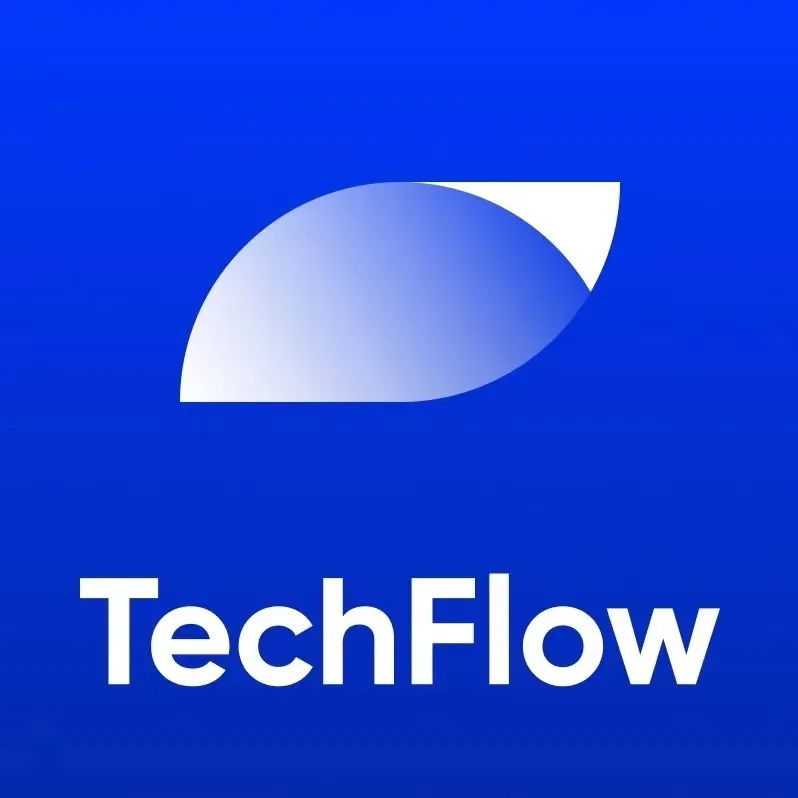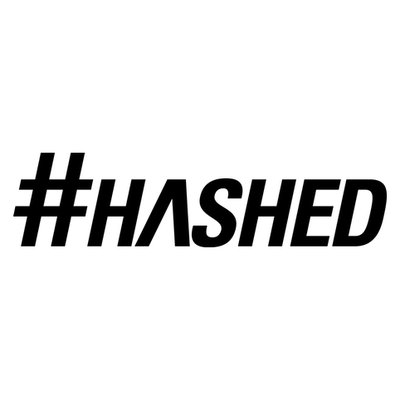Exclusive Interview with Story Protocol Co-Founder: An On-Chain Renaissance of "Programmable IP" Assetization
Reporter: Sunny and Min, Deep Tide TechFlow
Guest: Jason Zhao, Story Protocol Co-founder
The crypto world is a game about asset issuance and trading. From AI models to MEMEs, it seems that all intangible assets can be tokenized, thus starting their trading journey. What about IP?
The pioneer in this field is Story Protocol, which is building a programmable IP layer that allows creators to combine, reconstruct, and monetize their works through on-chain rules, aiming to lead a wave of on-chain renaissance.
In September 2023, Story Protocol announced the completion of a $25 million Series A funding round, led by a16z crypto. Combined with the previous $29.3 million funding, Story Protocol's total funding has exceeded $54 million, with other core investors including Korea's largest blockchain fund Hashed, the agency behind Gu Ailing, Endeavor, Samsung's investment arm Samsung Next, and the world's largest crypto accelerator Alliance…
Story Protocol has three co-founders, who come from Korea, the United States, and Chinese-American backgrounds, forming a unique "China-US-Korea" distribution.
S.Y. Lee graduated from the University of Oxford in the UK and previously founded the serialized novel platform Radish, and served as a VC partner at Korea's largest crypto fund Hashed;
Jason Levy graduated from Stanford University and was responsible for content and IP at Episode, a top storytelling platform on mobile devices;
Jason Zhao also graduated from Stanford University and worked as a product manager at Google’s DeepMind, focusing on commercializing the latest AI scientific achievements.
Curious about "How does Story Protocol lead the on-chain renaissance?", TechFlow interviewed co-founder Jason Zhao for insights.
The Founding Story of Story Protocol and the Background of Its Founders
TechFlow
Can you first introduce the background and original intention of the establishment of Story Protocol?
Jason
Story Protocol has three co-founders: S.Y. Lee, myself, and Jason Levy.
The establishment of Story Protocol is mainly driven by two factors. First, S.Y. and Jason are seasoned entrepreneurs in the media field, with rich experience in both the cryptocurrency and entertainment industries. For years, they have been exploring the issues within the intellectual property system of the creative industry. Recently, during the Hollywood strike, these issues have become particularly prominent, with actors and writers protesting against unfair practices in the creative economy.
Intellectual Property (IP) as an asset is often controlled by large studios like Disney or Paramount, making it difficult for smaller entities to acquire and utilize IP without extensive legal resources. The process is not only expensive but also lacks transparency.
As for myself, I worked for many years at Google's AI division, DeepMind, as a product lead. My job was to transform AI research into innovative consumer products. I am very interested in leveraging cutting-edge technology to enhance consumer accessibility and usability. In contrast, the dynamics and permissionless environment of the cryptocurrency space fascinate me even more, as it accelerates the process from research to product implementation. Individuals can propose ideas through white papers and quickly realize them, developing protocols involving significant transactions and user interactions within weeks. This open and natural product development approach sharply contrasts with the high computational and data demands of the AI field, where accessibility is often limited to a few large companies.
Additionally, I majored in philosophy in college, focusing on political theory, which sparked my strong interest in the fundamental ideas behind Bitcoin and Ethereum. The discussions around decentralized autonomous organizations (DAOs) and their potential governance models, which resemble cooperatives and reflect different political beliefs, also attracted me, allowing users to participate in governance and ownership.
Overall, Story Protocol offers a significant innovation opportunity in the field of intellectual property. While this area plays a crucial role in decentralized finance and financial infrastructure, its applications in the creative and cultural industries have yet to be fully explored. We are committed to leveraging the latest blockchain research to fundamentally change the way intellectual property is developed, managed, and monetized, initiating a true on-chain renaissance.
Traditional Intellectual Property Vs. Programmable Intellectual Property
TechFlow
What is programmable intellectual property, and how does it differ from traditional intellectual property?
Jason
Let me illustrate with an analogy.
DeFi (decentralized finance) has made money programmable, and our goal is to do the same for intellectual property (IP). Imagine if a physical dollar bill in your wallet could only be used to buy a lollipop at the corner store; its utility would be very limited, almost untraceable, and difficult to be accepted by the broader financial system.
In contrast, using stablecoins in DeFi, like USDC or USDT, while still representing one dollar, you possess an on-chain asset that can be used on platforms like Uniswap. You can swap USDC on Uniswap, stake ETH to get stETH through Lido, and then lend those stETH on Compound to earn compound stETH. This creates a vast financial ecosystem limited only by the creativity of developers and the capabilities of software, all without permission.
Now, applying this concept to IP, our goal is to make IP programmable, doing for IP what DeFi does for money.
Currently, managing IP mainly relies on traditional, paper-based methods. Consider popular characters like Mickey Mouse or Pokémon; their IP protection involves a plethora of legal documents. Entire legal teams are dedicated to protecting these IPs, and licensing often involves expensive and complex negotiations between lawyers, which is not a scalable solution. This leads to many potential IP interactions failing to occur due to high costs and friction.
At Story Protocol, we envision moving IP onto the blockchain and making it programmable, allowing media files to be tokenized as NFTs, and creating a rights layer for each media file—akin to a rights API. IP is not just media; it includes media plus rights.
Our goal is to enable creators to upload their IP to Story Protocol and define how others can compose and reuse their creations.
This approach will unleash full composability, extending from DeFi into the creative realm.
TechFlow
Can you describe the technical architecture of Story Protocol and how it uses blockchain technology to manage intellectual property?
Jason
The architecture of Story Protocol primarily consists of two basic components: "nouns" and "verbs."
"Nouns" represent the core elements or the state that defines IP. For example, you can bring any existing or newly created NFT, such as a Bored Ape, or if you are transitioning from Web 2.0, you might upload a character you created. Once uploaded, Story Protocol will automatically mint an NFT for you and assign an account with a designated pointer to each NFT. This process is similar to traditional NFTs but enhanced: we attach an account with a binding token to each NFT, similar to a smart contract wallet, serving as an entry point for a wide range of functionalities, including permissionless composability, licensing, royalties, and attribute management.
"Verbs" refer to the different actions or modules that define how your IP can be interacted with and monetized. These functionalities enable the IP registered on our platform to be used in dynamic and flexible ways.
These "nouns" and "verbs" together form the foundational structure of Story Protocol, providing a powerful and intuitive environment for managing and innovating intellectual property on the blockchain.
IP on the Blockchain Belongs to the RWA Category: Establishing an On-Chain Legal Layer Before Interoperating with DeFi
TechFlow
How does Story Protocol's programmable IP reach consensus with non-chain legal systems?
Jason
In terms of integrating with non-chain legal systems, Story Protocol's goal is not to replace existing legal frameworks but to enhance their efficiency.
We recognize that copyright is a reliable authoritative source and aim to bridge the gap between traditional paper-based legal systems and more autonomous blockchain infrastructure. To this end, we have collaborated with top legal teams to develop the " Programmable IP License ," which is legally binding and designed to cover a wide range of use cases, although certain specific situations may not be fully included.
It includes a set of legal terms—such as derivative rights, upfront fees, and royalty sharing—that directly map to on-chain logic, ensuring that legal terms are programmatically executed on the blockchain. This creates a crucial link between the legal and digital realms.
Regarding our market entry strategy, it involves two main directions.
First, we aim to attract existing Web 2.0 creators, dedicating about 20% to 25% of our efforts to attract well-known creators from Hollywood and other regions to develop new intellectual property on Story Protocol. This strategy is crucial as it showcases the benefits of our platform to mainstream audiences, emphasizing how it enhances creators' control and fan engagement, allowing them to participate legally in the creative process, similar to officially recognized fan fiction.
The remaining 75% of our efforts focus on the crypto-native space, where our vision is already deeply understood and highly recognized. This includes integrating with existing Web 3.0 applications and encouraging crypto developers to create new applications and IP types native to the blockchain environment. Given that new media technologies often differ significantly from their predecessors—just as short video content on TikTok is vastly different from traditional films—we believe there is a tremendous opportunity to provide the next generation of crypto-native creators with the chance to innovate and create unique content types that were previously unfeasible.
Overall, our approach balances introducing the advantages of blockchain technology to traditional creators while fostering a robust ecosystem of crypto-native innovation.
TechFlow
How does Story Protocol's work in intellectual property differ from bringing other digital assets on-chain (like internet domain names)?
Jason
At Story Protocol, our approach is very open, and we maintain a neutral stance on the types of intellectual property that can be registered. This flexibility stems from our core assumption: any NFT introduced into the protocol represents a media file. This file can be in various formats—music, audio, video, MP3, images, or written works. Essentially, any form of intellectual property can be integrated into the protocol.
Our primary focus is on introducing a legal layer on the blockchain to facilitate true, permissionless composability. Our goal is to encapsulate rights typically found in legal contracts into a format that can be represented and automatically executed on-chain.
This is not just about transferring licenses or images onto the blockchain—something NFTs have already achieved. The transformative aspect of Story Protocol lies in our simultaneous transfer of the logic that enables licenses to be self-executing and autonomous. This is where true innovation lies—creating a legal agreement that is not only digitized but also dynamic and capable of self-execution.
The real challenge, and our innovation, is in transcending the mere digitization of legal texts.
TechFlow
What is the first real-world intellectual property registered on Story Protocol?
Jason
Currently, Story Protocol is operating on a testnet and has become a hub for various experimental IPs. Creators are actively exploring and registering various forms of artistic works, from organized projects to more spontaneous creations. Given the breadth of activity and the decentralized nature of our platform, it is challenging to pinpoint a "first" IP. These contents span multiple media, quality levels, and creative intentions.
This vibrant testing ground is reminiscent of the early stages of other blockchain innovations, where many experiments ultimately shaped the standard uses of the technology. Just as it is difficult to recall the first ERC-20 token related to media, identifying the first IP on Story Protocol is equally complex, as creators from around the world continuously contribute diverse works.
How Does Story Protocol Integrate Traditional Internet Social Software with On-Chain Social Software?
TechFlow
How does the user experience created by Story Protocol differ from uploading creations on traditional social media?
Jason
Our vision is not just to develop a brand new application; we are actively integrating with existing Web3 social media platforms.
For example, when publishing a painting—unlike platforms like Instagram, where the images you post do not have inherent intellectual property protection—we provide a transformative approach.
When uploading, users can directly attach specific rights to their IP on these platforms without permission. For instance, if a creator wants others to commercialize a character they designed, they can set terms such as requiring a certain amount of ETH and revenue sharing, which are then stored and tracked on-chain through Story Protocol.
From the user's perspective, the interface remains familiar but includes significant improvements. While browsing feeds, in addition to common interaction buttons, there is an extra button displaying the rights associated with each asset. This feature enhances transparency and user control over IP.
The true innovation of our approach lies in its scalability and interoperability. Any application registering a character on Story Protocol not only secures it on that platform but also ensures the IP's universal accessibility. Just as on-chain data is available across multiple applications, so too is the IP managed by Story Protocol, allowing any application—be it a licensing marketplace, creator tools, or other social media platforms—to leverage the same IP, ensuring seamless integration and broad accessibility.
TechFlow
How does Story Protocol integrate with Web2 social media platforms for IP creation and management?
Jason
The platform of Magma allows multiple team members to log in and collaboratively create artworks, making it a popular choice for game and film studios. They currently have over 2.5 million users.
We have integrated with Magma and recently launched a demo in Denver, which you can check out on Twitter. Through this integration, artists can easily register their works on Story Protocol with just a click after completing their artwork on Magma. During the registration process, artists can directly set rights, which is a streamlined process we simplified in collaboration with Magma. This integration leverages our SDK and API, but more importantly, we abstract complex operations like wallet creation and gas fees to simplify the user experience. This ensures that creators on Magma can enjoy a seamless user experience without needing to delve into the underlying blockchain technology.
This collaboration reflects our strategy in the blockchain space—not just promoting the technology itself but emphasizing the tangible benefits it brings. For Magma, the focus is not on the blockchain but on how the functionalities we provide enhance their platform and user experience.
TechFlow
Why choose Magma?
Jason
Magma approached Story Protocol proactively, seeking to address some specific issues. First, their writers needed a way to protect their IP and ensure transparency and provenance, which blockchain technology naturally provides. This was their primary concern.
Second, Magma introduced a generative AI feature within its platform, allowing creators to incorporate AI-generated elements into their artworks. They wanted to use Story Protocol to track AI's involvement in the creative process. This capability has become increasingly important as it helps verify whether a work was generated by AI, addressing creators' concerns about authenticity and originality.
Third, and most excitingly, once an IP is registered on Story Protocol—like a stunning landscape created on Magma—it can be accessed by other applications. This means platforms like Lens, Forecaster, and various AI applications can connect and utilize this IP. We refer to this as creating a universal IP database or IP liquidity, where network effects exist; each registered IP's application allows any other application to leverage it. This interconnectivity significantly enhances the utility and reach of registered IPs.
Centralized Factors of Real-World Assets
TechFlow
What are the potential major risk factors for Story Protocol?
Jason
Businesses like Story Protocol, which aim to reimagine the intellectual property system in the creative industry, naturally face numerous challenges. One major obstacle is the complexity brought by the term "licensing." Typically, when people hear "IP" or "licensing," they often lose interest due to its complexity. We are investing significant effort to ensure that users of Story Protocol can benefit from our platform without needing to delve into the complexities of licensing.
A good analogy is the payment processing company Stripe. Stripe cleverly simplifies the complexities of the global banking system, making it easy for developers to understand. They do not need to educate users on how the financial system or credit card transactions work; instead, they provide a simple line of code that allows websites to easily accept payments.
Similarly, at Story Protocol, our goal is not only to communicate effectively with creators but also with developers. We want them to know that they can use Story Protocol to remix or monetize IP without becoming licensing experts. We handle the complex matters, allowing them to focus on creation and innovation. However, this simplification also brings new challenges, especially in overcoming deeply rooted cultural concerns about licensing formed due to historical complexities. Our task is to break down these barriers and demonstrate that managing IP can be as simple as integrating a line of code into an application.
How to Stay Competitive?
TechFlow
Can you share some innovative ideas and applications that Story Protocol is currently exploring or has already implemented?
Jason
Some concepts we are exploring are similar to Getty Images or Shutterstock but tailored for the Web 3.0 environment, particularly focusing on the monetization challenges associated with AI-generated images. This area has significant innovative potential, as current solutions for monetizing such content are limited.
Additionally, we have made progress in developing a social aggregation platform that supports Web 3.0 and has integrated with platforms like Lens and Forecast. Another area that has garnered significant attention but has yet to be widely explored is what I call "IP finance" or "IPFi." Intellectual property is a valuable category of real-world assets that is often leveraged but rarely fully utilized due to a lack of mechanisms for trading or creating liquidity.
The possibilities we are exploring include using IP as collateral for lending protocols or tokenizing and fractionalizing IP to unlock its value. These initiatives could transform IP into a more liquid asset class, facilitating new forms of financial interaction and investment. We are seeing significant and encouraging interest in developing such tools, highlighting the potential for innovative solutions in managing IP on the blockchain.
TechFlow
Given the various business models we discussed, how does Story Protocol plan to profit from these protocol projects?
Jason
Let’s compare it to Uniswap. For a long time, Uniswap operated without implementing any protocol fees. Only recently did their DAO vote to introduce fees at the protocol level. We see a similar path for Story Protocol. Just as Uniswap built a financial track for trading fungible tokens in the DeFi ecosystem, we are building a creative content or IP track that enables programmable IP to circulate effectively across platforms.
In terms of adoption, the value of a protocol is directly related to its usage; a standard only makes sense when it is widely adopted. Currently, we are operating as a public infrastructure, primarily focused on facilitating broad usage and integration.
Looking ahead, introducing protocol fees is a possibility we are open to, but it will be a community-driven decision. If the community chooses to initiate these fees, they will be designed to support the ongoing decentralization and sustainability of the protocol. This approach ensures that we prioritize broad adoption and usability over immediate revenue generation, laying the groundwork for long-term value creation within the ecosystem.
TechFlow
How do you view competition in this field, considering that other protocols similar to Story Protocol may emerge in the future?
Jason
The moat is a key issue. For Story Protocol, our moat lies in the quality and quantity of IP hosted on the platform. While our smart contracts are publicly available on GitHub, and I encourage everyone to check them out, our core strength lies in the IP itself.
Just as Uniswap retains its liquidity despite the possibility of forks like SushiSwap, our strength lies in the unique, high-quality content we host. Even if other entities replicate the logic and infrastructure of our protocol, they cannot replicate the unique cultural assets and creative content we possess—from top-tier characters to engaging videos and stories.
This creates a form of "IP liquidity," similar to the liquidity of fungible tokens. Just as liquidity is crucial for the success of decentralized exchanges, the rich repository of IP on Story Protocol makes it invaluable. Technology can be replicated, but the content ecosystem and the community that values and contributes to it—this cannot be replicated.













